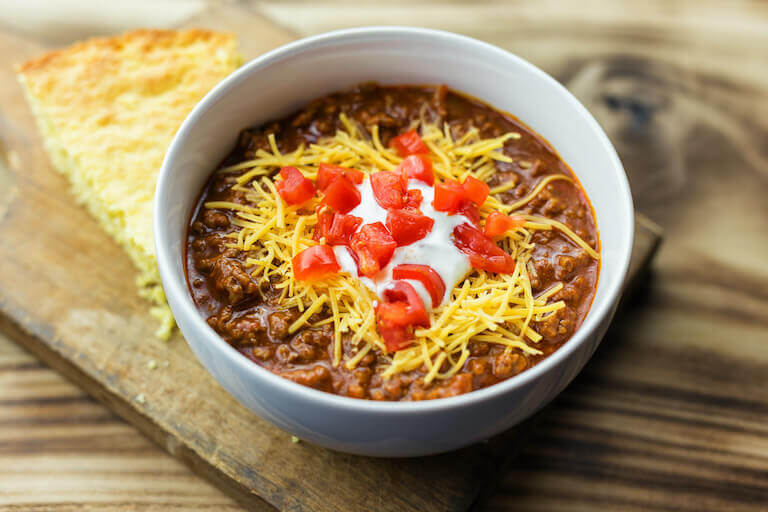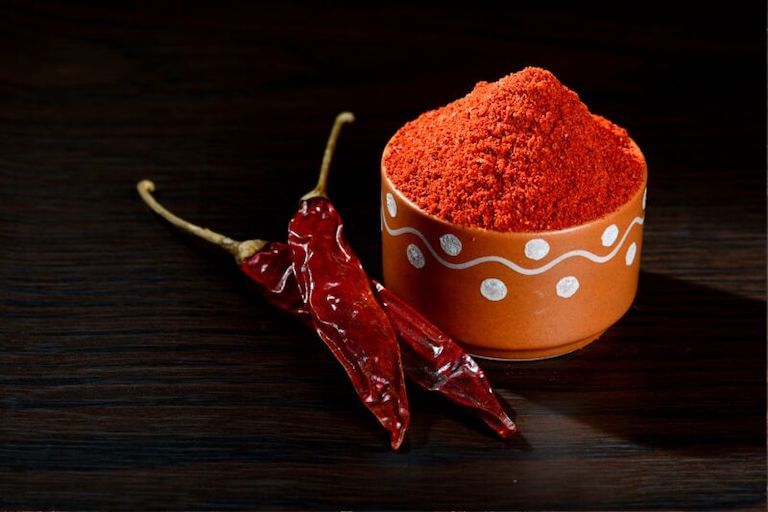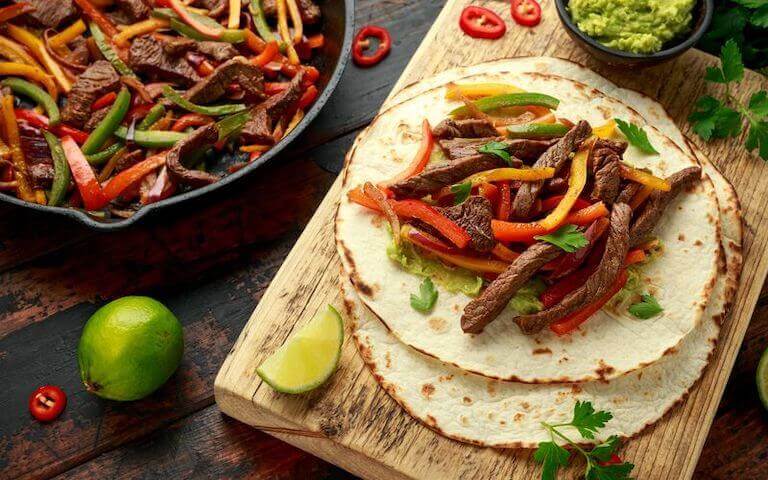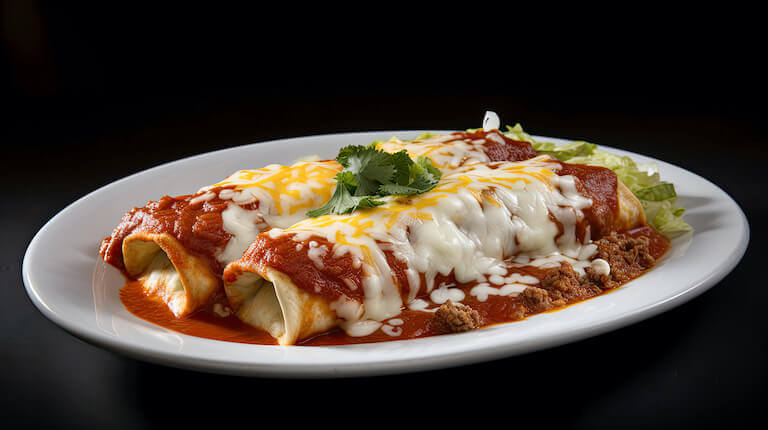Listen to This Article:
If you love a little Tex-Mex, you may have wondered what makes the food any different from traditional Mexican fare. The items on offer likely include tacos, nachos, quesadillas, and enchiladas, which looks a lot like what you’d see on the menu at your favorite taqueria.
Despite their similarities, Tex-Mex cuisine is its own genre, distinct from authentic Mexican food. So what’s the difference? It turns out it’s the unique cultural origins, and a few specific ingredients invented in the 1890s and early 1900s, that define Tex-Mex.
Cultural Melting Pot: The Cross-Pollination of Texan and Mexican Cuisine
Tex-Mex cuisine evolved over time from a combination of local home cooking traditions and new ingredients brought to Texas by immigrants. In the early 1800s, American settlers, Mexicans, and Native Americans lived together in what we now call Texas. These groups intermingled in the cattle ranching culture of the time and exchanged culinary traditions and ingredients.
Texan and northern Mexican ranch kitchens typically featured beef, ground corn, and beans, as well as fresh, spicy chili peppers, often prepared in the field on cattle drives or in ranch kitchens for cow hands. The Tejano people, who were Spanish-speaking residents of Texas, commonly used traditional Mexican and Spanish ingredients such as corn, beans, chiles, and rice, along with pork and chicken in their home cooking.
Spanish immigrants to the area brought cumin from the Canary Islands, and the seasoning was incorporated into local dishes.

Savory chili con carne, made with slow-cooked beef, tomatoes, and dried chili powder, was one of the first Tex-Mex sensations.
Fusion Evolution: How Tex-Mex Cuisine Emerged
As these groups lived and worked together in Texas, the adaptations of Tejano home cooking started to take on a distinct regional character.
The first popular uniquely Tex-Mex dish was chili con carne. Based on Native American recipes, this spicy stew features beef chunks and tomatoes seasoned with spicy chilies. Chili con carne was sold by street vendors in San Antonio in the 1880s. But chilies were hard to come by out of season, which led to the development of a key ingredient for Tex-Mex cuisine.
German immigrant William Gebhardt invented Gebhardt’s Eagle Chili Powder in the 1890s—a brand still sold today. He included dried chiles, cumin, and oregano in the seasoning so he could serve chili con carne year-round in his Texas cafe, even when chile peppers weren’t in season. The invention of dried chili powder also allowed chefs far and wide to experiment with the Tex-Mex flavor profile, even if they lived far from Texas. That included chili con carne served at the 1893 Chicago World’s Fair, which introduced the flavors of the Texas border to northerners. The chili was an instant hit.

Gebhardt’s Eagle Chili Powder allowed Tex-Mex flavors to be used by chefs far and wide.
Tex-Mex Enters the 20th Century
In the early 20th century, other newly invented ingredients were adopted into Tex-Mex cuisine. Chefs and cooks made use of newly available pre-made flour (wheat) tortillas, canned tomatoes, and yellow cheddar cheese. Signature Tex-Mex dishes evolved as restaurant owners and chefs created new dishes, like fajitas and nachos, to meet the moment.
For example, Ignacio “Nacho” Anaya, owner of The Victory Club in Piedras Niegras, Coahuila, Mexico, accidentally invented Nachos, a dish of crispy tortilla chips topped with melted cheese and jalapeno strips, in the 1940s.
And though you might think of the combo plate featuring a side of rice and refried beans as a Mexican restaurant staple, it first appeared in 1900 in Texas. This practice became common in Mexican and Tex-Mex restaurants throughout the U.S. in the 1950s.

Now a Tex-Mex classic, fajitas were invented by Ninfa Rodriguéz Laurenzo in Houston, Texas in the 1970s.
It wasn’t until the 1960s that the first known mention of the term Tex-Mex occurred. A 1960 article in The Binghamton Press featured several “Tex-Mex” recipes. After that, writers and food enthusiasts began to use the phrase to refer to this fusion of Texan and Mexican food in the 1960s and 1970s.
In 1972, Diana Kennedy declared in her landmark work The Cuisines of Mexico that Mexican food in the US was not authentic, but was its own unique thing. Tex-Mex thus became regarded as a separate type of cuisine, defined by its multicultural origins.
Since the 1970s, Americans have widely adopted Tex-Mex cuisine as a flavorful and affordable favorite, ordering enchiladas and hard-shell taco combo plates in restaurants all over the country.
Favorite Tex-Mex Dishes You Already Love
Many of your favorite dishes commonly served at Mexican restaurants are actually Tex-Mex fusion recipes. Throughout Texas and the entire United States, the use of beef, yellow cheddar cheese, sour cream, canned tomatoes, wheat tortillas, crispy-shelled tacos, and dried chili powders like Gebhardt’s distinguish Tex-Mex cuisine from traditional Mexican fare.
Here are a few of the common Tex-Mex dishes you probably didn’t realize weren’t traditional Mexican food:
Fajitas
Fajitas are a Tex-Mex entree dish featuring seasoned strips of beef grilled with onions and bell peppers flavored with Tex-Mex seasoning like chili powder. It’s often served sizzling on a hot cast iron skillet with flour tortillas, cheese, sour cream, and sometimes a side of rice and beans. Fajitas were invented in the 1970s by Ninfa Rodriguéz Laurenzo in Houston, Texas.
Enchiladas
Enchiladas are delicious Tex-Mex comfort food. Flour tortillas are filled with ground beef and cheese, rolled into pillowy tubes, and smothered with spicy, rich, and tangy red or green sauces and more grated cheese. Enchiladas are then baked until the cheese is melted and the sauces have infused the dish with flavor. They are usually served as part of a combo plate with rice and beans.
This type of enchilada is a Tex-Mex adaptation of the more traditional Mexican enchiladas, which are usually made with corn tortillas, and a more modest filling of pork or chicken.

Enchiladas wrapped in flour tortillas are a Tex-Mex adaptation of the more traditional corn-tortilla-wrapped Mexican dish.
Nachos
A sports bar or game day favorite, nachos feature tortilla chips covered with melted cheddar cheese sauce (called queso), jalapeno peppers, and an à la carte variety of other toppings, like sliced black olives, tomatoes, guacamole, salsa, or sour cream. Nachos were invented in northern Mexico by Ignacio “Nacho” Anaya in the 1940s and quickly became popular all over Texas.
Quesadillas
Loved by children and adults alike, quesadillas are large flour tortillas, browned to a crisp, filled with melted cheese and topped with sour cream. Adventurous diners may garnish quesadillas with salsa or hot sauce.
Chili con Carne
A true mélange dish, chili con carne combined native American stew traditions with Tejano and Mexican ideas to create a spicy, tomato-based stew with cubes of beef, seasoned with dried chili powder. Traditionally, chili con carne does not contain beans.
Tex-Mex Paste
A new Tex-Mex seasoning from HelloFresh (the subscription meal box company), Tex-Mex paste is a thick, tangy, tomato-based BBQ-sauce-like condiment for all your favorite Tex-Mex dishes. The paste combines chipotle peppers (smoke-dried jalapeño peppers), fire-roasted tomatoes and garlic, tomato paste, cumin, coriander, and garlic-chili paste.
Distinctive Tex-Mex Cooking Techniques and Ingredients
It’s true that Tex-Mex cooking is similar to traditional Mexican cooking, but there are a few key ingredients and cooking methods that help define a dish as Tex-Mex.
Chili Powder Powers Tex-Mex
Tex-Mex cooks use a distinct type of chili powder that combines cumin with dried, ground ancho chilies, oregano, and black pepper. Traditional Mexican cooking relies more on well-cooked and seasoned pork or chicken prepared with fresh chile peppers and topped with fresh garnishes, like raw onion, cilantro, and tangy salsas. Cumin is not a common spice in Mexican cooking.
Tex-Mex vs. Mexican Tacos
Tex-Mex chefs sometimes prepare tacos with briefly deep-fried tortillas. The resulting “puffy” taco has a crisp exterior with a softer interior that is ready to be filled with all the delicious ingredients that characterize Tex-Mex tacos. Hard shell tacos are also distinctive in Tex-Mex cooking. Tex-Mex tacos also typically have a lot of ingredients, like beans, tomatoes, lettuce, cheese, and sour cream, while traditional Mexican tacos are usually made with soft corn tortillas, and contain only meat with some onion, cilantro, and lime.
Meat Preparation Matters
Another key Tex-Mex cooking technique is grilling or slow-cooking beef. Chefs preparing fajitas grill strips of beef, while those preparing chili con carne slow-cook cubed beef steak or roast cuts. Traditional Mexican chefs more often spit roast their meat or focus on grilled or slow-cooked pork and chicken instead.
More Cheese, Please
The spicy, melted nacho cheese sauce that we love to enjoy on corn tortilla chips is a uniquely Tex-Mex recipe. The sauce is made by melting yellow cheddar cheese and adding flavorings, like jalapeño peppers, and thickeners, like cornstarch, to make it smooth and creamy. Traditional Mexican cooking usually uses cheeses like queso fresco, cotijo, and queso Oaxaca instead.
The Future of Tex-Mex Cuisine
As a style of cooking that emerged from intermingling cultures, it makes sense that Tex-Mex has continued to grow and change. Chefs experimenting with the staples of the cuisine have arrived at a range of gourmet elaborations. Restaurants like El Chile Cafe y Cantina are celebrated for bringing high-quality ingredients and culinary inventions to foods that have usually been made cheaply and quickly.

Aspiring chefs gather in the kitchen at Auguste Escoffier School of Culinary Arts Austin, Texas campus.
There’s still plenty of room for new culinary voices to innovate and create new flavors and traditions. A Culinary Arts program with Auguste Escoffier School of Culinary Arts could help you find your voice in Tex-Mex or another specialty cuisine. And attending culinary school online or on Escoffier’s campus in Austin, Texas could give you the opportunity to study and learn in the heart of Tex-Mex country. Before you know it, you could be part of bringing a new evolution of regional cuisine to life!

